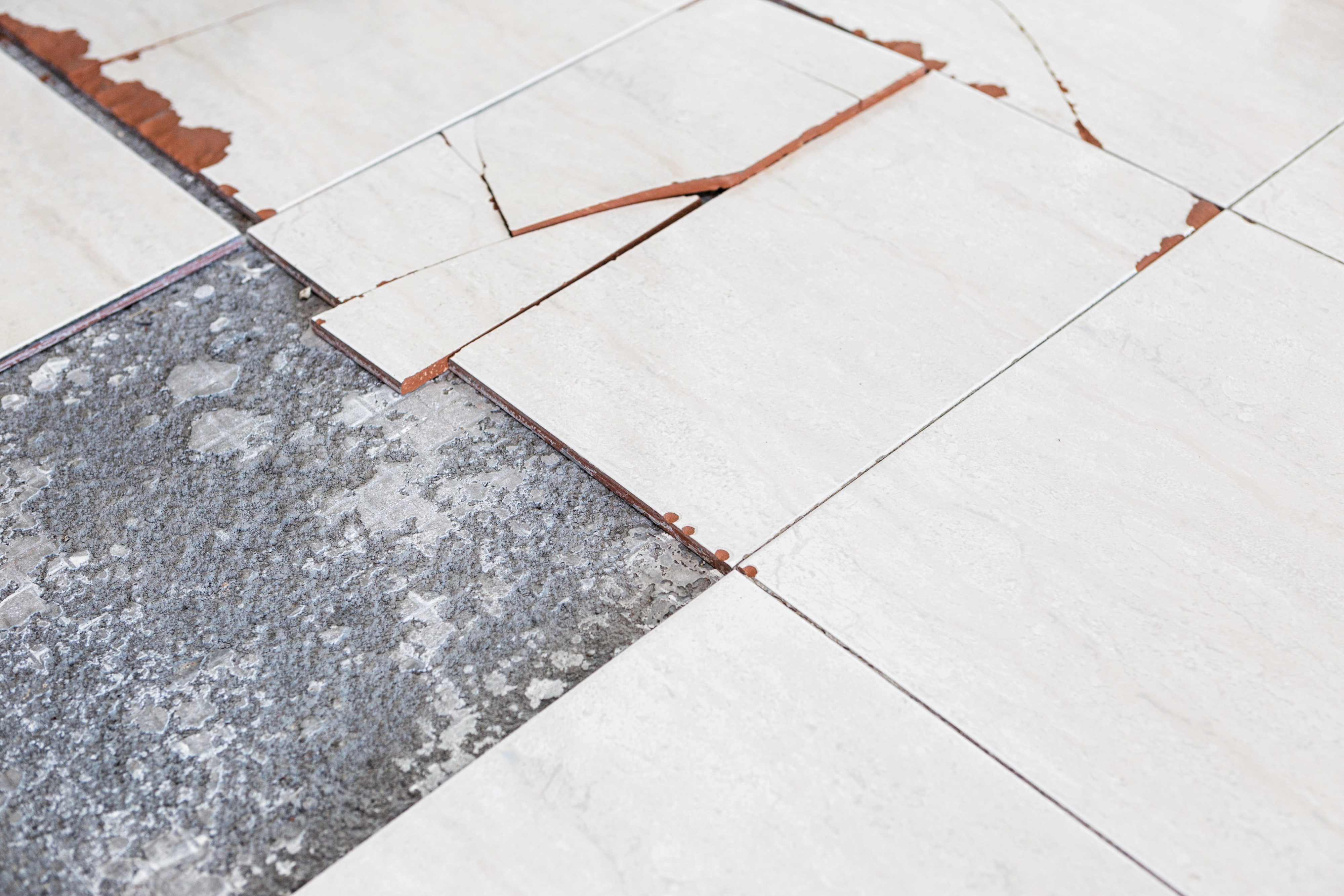If you live in an older home, understanding the potential presence of asbestos is crucial for your safety and health. Asbestos was once widely used in various building materials due to its durability and fire-resistant properties.
Many of these asbestos-containing products were incorporated into the construction of homes built before the 1980s. Knowing what household products may contain asbestos can help you take the necessary steps to ensure a safe living environment.
Require asbestos inspection, testing or removal from your Perth home? Get a quote today!
What is asbestos?
Asbestos is a group of naturally occurring fibrous minerals composed of thin, needle-like fibres. It was commonly used in various building materials from the 1940s to the late 1980s due to its strong resistance to heat and corrosion. Despite its beneficial properties, asbestos poses significant health risks when its fibres become airborne and are inhaled.
Where is asbestos found in old homes?
Asbestos products can be found in a number of building materials used in your homes flooring, walls and eaves, roofing, ceiling, fence, plus more. Here is a more detailed list of where asbestos can be found in older homes:
1. Insulation materials
Insulation materials are one of the primary sources of asbestos in old homes. Asbestos was prized for its heat-resistant properties and was commonly used in a variety of insulation products. Here are some specific places where you might find asbestos insulation:
- Attic insulation: Vermiculite attic insulation, especially from the Libby mine in Montana, often contains asbestos. This type of insulation was used in many homes built before the 1990s.
- Pipe insulation: Asbestos was used to wrap things like hot water pipes and ductwork to prevent heat loss and protect against fire. This insulation often appears as a white or grey fibrous material wrapped around pipes.
- Boilers and furnaces: Asbestos insulation was also used around boilers, furnaces, and other heating equipment to prevent heat loss and increase efficiency. This insulation can be found as sheets or blankets and is particularly hazardous if disturbed.
2. Roofing and siding
Asbestos was widely used in roofing and siding materials due to its durability and resistance to weather and fire. If your home was built or renovated before the 1980s, the following areas might contain asbestos:
- Roofing shingles: Asbestos was used in asphalt shingles to enhance their durability and fire resistance. These shingles can be found on roofs of homes built during the mid-20th century.
- Siding: Asbestos cement products, such as siding (often known as transite) was a popular choice for exterior cladding. These panels are usually grey and have a rough texture. Over time, they can become brittle and release asbestos fibres if broken or disturbed.
- Felt underlayments: Roofing felt used as an underlayment beneath shingles or other roofing materials may also contain asbestos. This material provides an additional layer of fire resistance and weatherproofing.
- Asbestos Cement Sheeting: Asbestos cement sheeting was used in both roofing and siding applications. These sheets are rigid and durable, commonly found in older homes as corrugated roofing or flat sheets used for wall cladding.
3. Flooring
Flooring materials in older homes are another common source of asbestos. It was used extensively in various types of flooring to enhance durability and fire resistance:
- Vinyl floor tiles: Asbestos was commonly added to vinyl floor tiles to increase their strength and heat resistance. These tiles are often 9×9 inches or 12×12 inches and were popular in homes from the 1950s to the 1980s.
- Adhesives and mastics: The adhesives used to install vinyl tiles and other types of flooring often contained asbestos. These adhesives can become hazardous if the flooring is removed or disturbed.
- Sheet flooring and backing: Asbestos was used in the backing of vinyl sheet flooring to provide additional strength and insulation. This backing can become friable and release fibres if the flooring is damaged or worn.

4. Wall and ceiling materials
Asbestos was commonly used in various wall and ceiling materials in older homes. These materials include:
- Plaster: Some older homes have plaster walls and ceilings that contain asbestos. Asbestos was added to plaster to improve its strength and fire resistance.
- Drywall and joint compounds: Asbestos was used in drywall joint compounds and taping mud. This material was applied to seams and joints between drywall panels and can release fibres when sanded or disturbed.
- Textured paint and popcorn ceilings: Asbestos was often used in textured paints and popcorn ceiling treatments. These treatments were popular from the 1950s to the 1980s for their decorative appearance and soundproofing qualities.
- Wall Tiles: Asbestos was used in the adhesive materials for wall tiles and sometimes in the tiles themselves. These can be found in kitchens, bathrooms, and other wet areas in older homes.
5. Electrical insulation
Electrical systems in older homes may also contain asbestos. It was used in various components to provide insulation and fire resistance:
- Wiring insulation: Asbestos was used to insulate electrical wiring, particularly in homes built before the 1980s. This insulation can become hazardous if the wiring is disturbed during renovations or repairs.
- Electrical panels: Asbestos-containing materials were used in electrical panels and circuit breakers to prevent fires and improve safety. These panels can release fibres if they deteriorate or are damaged.
6. Heating ducts
Heating ducts and other HVAC components in older homes often contain asbestos products. This material was used to insulate ducts and improve energy efficiency:
- Duct insulation: Asbestos duct insulation was used to prevent heat loss and enhance the efficiency of heating systems. This insulation appears as a white or grey fibrous material wrapped around ducts.
- HVAC components: Asbestos was also used in other HVAC components, such as gaskets, to provide heat resistance and durability. These components can become hazardous if they deteriorate or are disturbed during maintenance.
Ensure your home is safe and asbestos-free with Rapid Asbestos Removals.
Why is asbestos dangerous?
When an asbestos-containing material is disturbed, it releases tiny fibres into the air. These airborne asbestos fibres can be inhaled and become lodged in the lungs, leading to serious asbestos related diseases and health conditions such as:
- Asbestosis: A chronic lung disease causing scarring of lung tissue.
- Lung cancer: Prolonged exposure to asbestos fibres significantly increases the risk.
- Mesothelioma: A rare and aggressive cancer affecting the lining of the lungs, abdomen, or heart.
In most instances, it takes up to 20 years from asbestos exposure before you develop asbestos related diseases.
The importance of professional asbestos removal
Hiring a professional asbestos removal company is crucial for ensuring the safe and effective elimination of asbestos from your home. Professionals have the necessary training, equipment, and experience to handle asbestos safely and in compliance with all regulations.
Why choose Rapid Asbestos Removals?
At Rapid Asbestos Removals, we are committed to providing safe and efficient asbestos removal services. Our team are trained to handle asbestos with the highest level of care, ensuring the safety of your home and family.
We offer:
- Comprehensive asbestos inspections: Detailed assessments to identify the presence of asbestos.
- Safe and efficient removal processes: Utilising the latest techniques and equipment.
- Compliance with safety regulations: Adhering to all local and national guidelines.
- Competitive pricing: Providing affordable solutions without compromising on quality.
- Peace of mind: Ensuring your home is free from asbestos hazards.
Remove asbestos in your home with Rapid
If you suspect asbestos in your home, don’t take any risks. Contact Rapid Asbestos Removals today for a professional assessment and safe removal. Protect your home and family from the dangers of asbestos by choosing the experts in asbestos removal.
FAQs about asbestos in old homes
The only way to be certain is to have a professional asbestos inspection. Experts can safely collect samples and have them tested in a laboratory, if required. Rapid Asbestos Removals offers comprehensive inspection services to help identify asbestos in your home.
It is highly recommended to hire a professional asbestos removal service. Handling asbestos materials without proper training and equipment can be extremely dangerous. Professionals like Rapid Asbestos Removals are trained to handle asbestos safely and effectively.
Do not disturb the material. Contact a licensed asbestos removal company like Rapid Asbestos Removals to assess the situation and safely remove the asbestos. Disturbing it can release harmful asbestos fibres into the air.
As long as the asbestos-containing materials are intact and left undisturbed, they pose little risk. However, damaged or deteriorating asbestos materials can release fibres and should be addressed promptly. Regular inspections and maintenance can help ensure safety.
During home improvements, especially when using power tools, it's crucial to avoid disturbing asbestos-containing materials. Power tools can create dust and release asbestos fibres into the air, posing a significant health risk. Homeowners should always take the necessary precautions and consult with a professional asbestos removal service before beginning any renovation projects.


